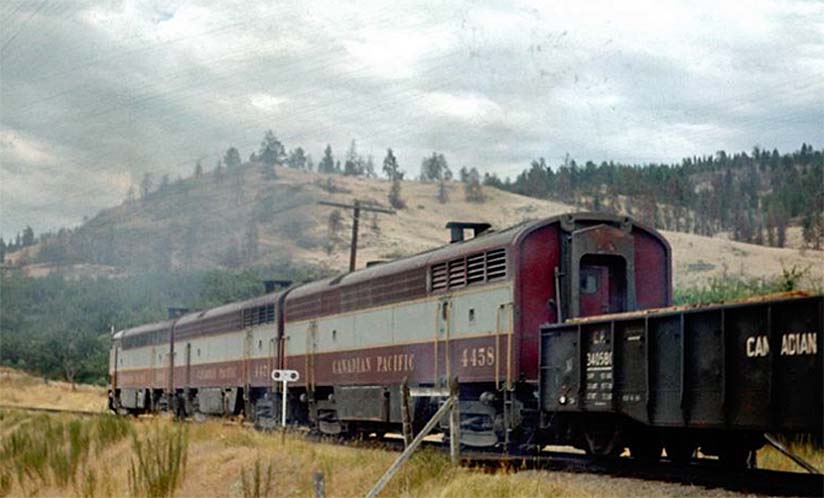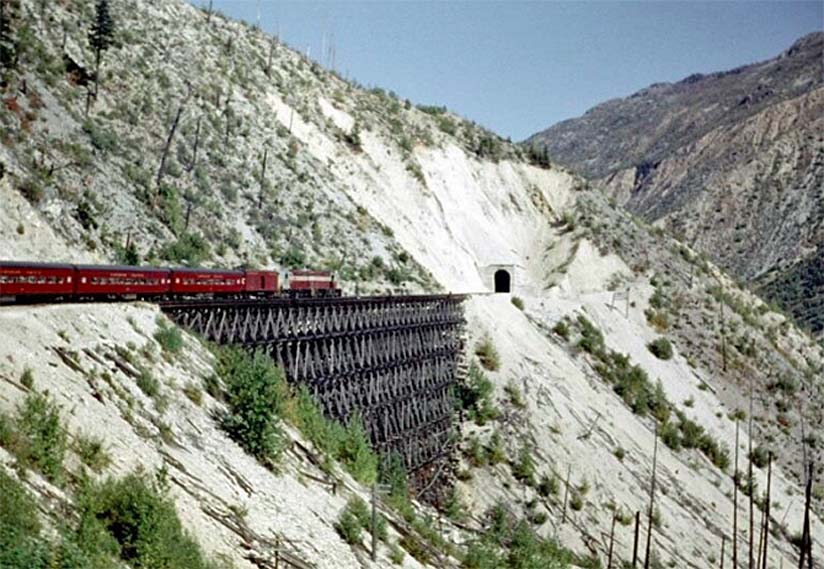
British Columbia - The late Dave Wilkie was a steam train enthusiast who understood the historical value of what he was seeing and
recording.
Dave took hundreds of photos and 8 mm movie film of North American steam trains in their final heyday, including some priceless photos and video of British
Columbia's Kettle Valley Railway.

His son, Mike Dunham-Wilkie, has been making an effort to bring those historical treasures to a wider audience, recently putting together an album of his
father's photos and videos taken of the Kettle Valley Railway in the Coquihalla and Carmi subdivisions.
"He tried to capture stuff before it stopped running, tried to capture events as they happened," Mike recalls of his father's photographic
works.
Living in Victoria, a lot of Wilkie's work centered around the end of the steam era on Vancouver Island.
"The steam locomotives ran on the Island until the late 1950s. He tried to capture their last days. He did a lot there, not as much on the Kettle Valley,
but in the later years he captured some of the last runs on the section of the line between Spences Bridge and Penticton," Mike says.
One of Dave's videos is a home movie taken of a "fan trip on the CPR Coquihalla subdivision," a fascinating look at the railway through the
formidable Coquihalla Canyon in 1957, two years before the last train ever to run through the canyon was made in November, 1959.
By the late 1950s and early 1960s, the writing was on the wall for the Kettle Valley Railway following the opening of the Hope-Princeton Highway in
1949.
Passenger rail traffic was cut in half within months of the highway's opening.

The fact Dave's photos were taken near the end of the railway's transportation dominance in southern B.C. is another thing that makes them
special.
The last views of a train passenger's slow journey on the historic railway are now the first views for new generations.
Many people today see the journey mostly as an inconvenience as they zip through the canyon at highway speed, largely oblivious to the fact trains ever ran
through the pass.
Mike says his father had a particular passion for the steam era.
He says there is a gap in his father's photographic history of about five years between the end of steam and the continuation of his photographic collection
with diesel powered trains.
"I guess he finally accepted the fact they were here to stay," Mike laughs.
He remembers family trips to U.S. western states like Colorado, where his dad continued to film and photograph steam era trains after they had disappeared from
tracks in Canada.
Dave also has a national legacy in the form of a mural in the senate building in Ottawa.
"He had taken a photo of the Koksilah trestle (Kinsol) on Vancouver Island in the 1950s. Someone from an architecture firm saw it on Flickr, and asked for
a digital file of it," Mike says.
"Squamish Museum has most of dad's stuff. They scanned it and I sent it to the firm. They used it to build a big mural in the new senate building in
Ottawa," Mike says.
He says his father's interest in trains was life long.

Dave Wilkie died of cancer in 1998, but Mike says he was actively pursuing his passion until about six months before he died.
"He also co-authored books on local railways. He helped Barrie Sanford with his work, "McCulloch's Wonder," and co-authored with
others," Mike says.
These days, Mike is happy to post his father's photos, introducing new generations to the Kettle Valley Railway and other railways that have only recently been
lost to time.
"If he was alive, he would want as many people as possible to see these photos. There is some great stuff he took that wouldn't be seen otherwise,"
Mike says.
"That film of the fan run, that's priceless. We've shown it in our living room on dad's old 8 mm projector. Up until YouTube, only a handful of people
would get the opportunity to see it," Mike says.
Steve Arstad.
provisions in Section 29 of the Canadian
Copyright Modernization Act.


